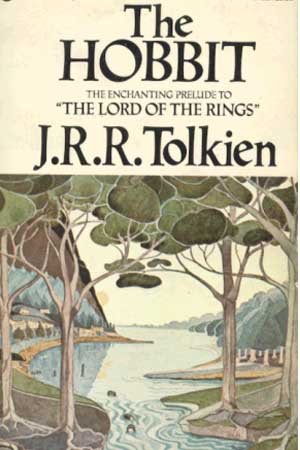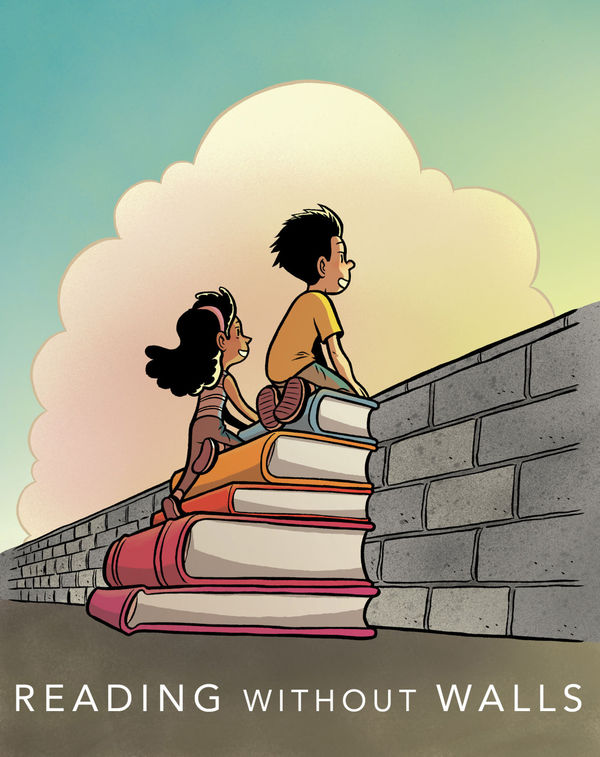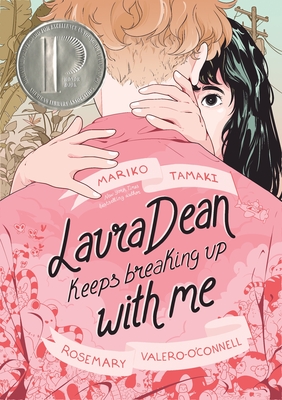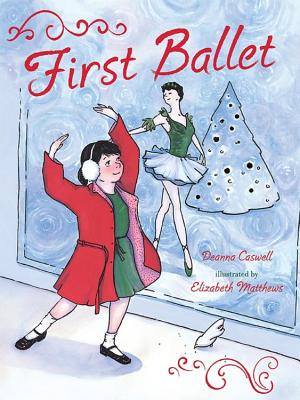The sunshine is reflecting off the front windows of the shop, we don’t shiver from the gust that sneaks behind the register when the door opens and closes, and there are little plush bunnies peeking from the corner of every shelf. Spring has arrived in Indiana, and the store is literally hopping with kids and parents, nannies and new grandparents. Some are here “officially” to pick up travel toys, activity books and new reading material for the 14 – 20 hour drive south for Spring Break next week (there is much spirited debate among moms at story time over the wisdom of driving overnight versus leaving at the crack of dawn… it’s the same distance, but ages and napping ability of the children greatly influences this decision), and some are here just to finally, finally get out of the house with little ones who have coughed, sniffled and sneezed their way through February and early March.
Continue reading
The Compelling Conundrum of Middle School Events
Kenny Brechner - March 27, 2019
Many times I ask myself what do about middle school author visits. It is so hard to get pre-orders for them that one inclines towards despair.  What makes it worse is that they are often the most dynamic in terms of student engagement. Some of the most memorable school visits I have ever witnessed, and I’ve seen many, occurred at middle schools. This is paired with the most lackluster pre-order sales one can cringe to recall.
What makes it worse is that they are often the most dynamic in terms of student engagement. Some of the most memorable school visits I have ever witnessed, and I’ve seen many, occurred at middle schools. This is paired with the most lackluster pre-order sales one can cringe to recall.
The reason for this phenomenon is obvious, but the answer is not. Nobody lives in the now more than middle school students. Do pre-order forms make the trip home and then back again? The answer is no. No school event in the future is worth considering. Even Bilbo Baggins, mister there and back again himself, would have left his pre-order form at home were he a middle school student. On the other hand their inner lives are under immense pressure, and if a good presentation draws them forth into public view, the results are correspondingly spectacular.
Continue reading
Board Books vs. Common Sense
Elizabeth Bluemle - March 26, 2019

© Leung Cho Pan | Dreamstime.com
Last week, I argued for breaking down the artificial and rigid age barricades we erect around picture books. This week, I am pleading to bring back some sanity surrounding the age-appropriateness of board books, those thick-paged little books that used to be created with our very youngest readers in mind, but are now becoming a strange land where books meant for ages 4-7 are suddenly in toddler format.
Increasingly, publishers are turning popular picture books into board books whether or not the content, style, complexity, or topic is appropriate for children under the age of three. It’s as though folks have decided to ignore Piaget altogether, or have never read a board book with an actual toddler.
Continue reading
Making Mistakes and Falling in Love
Meghan Dietsche Goel - March 22, 2019
 A couple of years ago, my ShelfTalker colleagues and I all participated in Gene Luen Yang’s Reading Without Walls Challenge. For my turn, I confronted my well-ingrained resistance to graphic novels and found no good reason for my reluctance at all. Prior to the challenge, I had loved the spectacular visuals of books like The Arrival by Shaun Tan or The River by Alessandro Sanna, but my brain sort of fritzed out when a lot of words in boxes entered the picture. But something about concentrating my attention on several graphic novels back to back really did start to retrain my brain. Taking the time to write about them only cemented the experience.
A couple of years ago, my ShelfTalker colleagues and I all participated in Gene Luen Yang’s Reading Without Walls Challenge. For my turn, I confronted my well-ingrained resistance to graphic novels and found no good reason for my reluctance at all. Prior to the challenge, I had loved the spectacular visuals of books like The Arrival by Shaun Tan or The River by Alessandro Sanna, but my brain sort of fritzed out when a lot of words in boxes entered the picture. But something about concentrating my attention on several graphic novels back to back really did start to retrain my brain. Taking the time to write about them only cemented the experience.
Two years later, I’ve realized that I actually gravitate to the graphic ARCs first when the publisher boxes arrive. Fantastic middle grades like the recently released New Kid by Jerry Craft and the upcoming Queen of the Sea by Dylan Meconis make it easy, charting complex territory with fascinating characters and rich, full-color imagery. But while I’ve fully embraced the power of the visual medium, I admit I still eschew stories centered on the ups and downs of falling in love (in any format). Don’t get me wrong, YA needs those books. After all, falling in and out of love while staying true to yourself is one of the most confus ing parts of being a teen—or an adult for that matter. It’s just never been my favorite thing to read. However, as I looked over my stacks of ARCs this week, I spotted a trio of romance-heavy graphic novels from First Second that made me decide to push past my natural inclinations once more. Continue reading
ing parts of being a teen—or an adult for that matter. It’s just never been my favorite thing to read. However, as I looked over my stacks of ARCs this week, I spotted a trio of romance-heavy graphic novels from First Second that made me decide to push past my natural inclinations once more. Continue reading
When Go To Books Go Away
Kenny Brechner - March 21, 2019
There are many rationales for a reader’s conviction that a book should not have gone out of print. They may be divided into two categories, a conviction that the retirement of a book was unjust, and a conviction that it was unwise. Those titles which inspire a sense of being unjustly commended to the “harbor of oblivion which awaits us all” deal with a sense of personal value, of a conviction in a book’s intrinsic worth. Those are worthy sentiments, or at least I hope they are, but we are in a more scientific frame of mind today. Our task here is to seek a standard which offers a bookselling basis, a canary in the coal mine style methodology, which reveals when a book was retired unwisely because it demonstrably still would have many sales in its future if it were to have one restored.
 The method I put forward involves the loss of a go to book for an evergreen need, a book which we continue to reflexively reach for to meet a customer’s stated need, only to remember, with a jolt, that it is no longer in print. Here is an example. A customer comes in wanting a picture book on ballet. I know the perfect book: First Ballet by Deanna Caswell, with wonderful illustrations by Elizabeth Mathews. If ever a book proved the idea that less is more when it comes to picture book rhyme schemes it is First Ballet. This delightful book not only captures the magic of loving the ballet, but it captures the charm of truly being captivated by anything. I never recall showing it to a customer who was not entranced and thought it the perfect gift, especially because it is so much about sharing the love of ballet with someone else. I know that I could continue to sell it solidly as long as the world has both ballet and children.
The method I put forward involves the loss of a go to book for an evergreen need, a book which we continue to reflexively reach for to meet a customer’s stated need, only to remember, with a jolt, that it is no longer in print. Here is an example. A customer comes in wanting a picture book on ballet. I know the perfect book: First Ballet by Deanna Caswell, with wonderful illustrations by Elizabeth Mathews. If ever a book proved the idea that less is more when it comes to picture book rhyme schemes it is First Ballet. This delightful book not only captures the magic of loving the ballet, but it captures the charm of truly being captivated by anything. I never recall showing it to a customer who was not entranced and thought it the perfect gift, especially because it is so much about sharing the love of ballet with someone else. I know that I could continue to sell it solidly as long as the world has both ballet and children.
Continue reading
Let the Children Read
Cynthia Compton - March 20, 2019
“Excuse me, can I ask you a question?”
“Of course. How may I help?”
“I am looking for a special book. I would like for it to have lots of pictures, and be a good story. And I would like for it not to be too scary.”
“Absolutely. Those are all good features to look for, and I appreciate your asking me for suggestions. May I show you a few books over here?” (We walk slowly toward the picture book section, me pausing just a second or two to nudge the toy shopping cart out of the way with my knee before my customer reaches the big puzzle rack.) “Is this book to be read out loud?”
“Yes. At bedtime. So not too scary, please.”
“Indeed.”
Continue reading
Not Your Kid’s Picture Book Anymore
Elizabeth Bluemle - March 19, 2019
There are picture books that engage, transport, amuse, intrigue, enchant, comfort, or even haunt adults, but that don’t connect with the children who are their purported audience. This would be absolutely fine—picture books are a unique and endlessly variable art form—but it can be hard to overcome customers’ resistance to buying them for themselves. As one of my bookselling colleagues said recently, people will spend $40 on glossy coffee table art books they’ll look through once or twice, but are reluctant to buy themselves an $18 picture book they can’t stop leafing through in the store.
I’ve had more than a few customers over the years pore through picture books, then sadly place them back on the shelves, saying, “I love this, but I don’t have little children in my life anymore.” Good news, my friends: Picture books are not just for children, especially now.
Continue reading
Family Is Family
lhawkins - March 18, 2019
After 14 years in children’s bookselling it sometimes feels like all the big firsts for my bookstore are probably in the past. Thankfully, that’s not true.
Many children’s booksellers offer in-store birthday parties, which can be profitable on multiple fronts: the rental fee for the space and service, as well as bringing parents and caregivers of the little guests into the store the day of the event, and creating positive word of mouth marketing after the fact.
To be honest, my attempts to launch a birthday party program at Spellbound have had mixed results. I’ve had slightly more success hosting baby showers in the bookstore, helped by the now years-long (and hopefully never ending) trend of parents-to-be asking that guests bring a book for the baby in lieu of a card.
Continue reading
In Response to “The Problem with Problems”
Cynthia Compton - March 15, 2019
An unfortunate flight cancellation and a very long drive home on Tuesday (“hello, National? I need a car to drive one-way to Indianapolis”) led me to request a last-minute schedule change for my weekly ShelfTalker contribution this week. My colleague Meghan Dietsche Goel jumped right in with her terrific What Austin Teens Wish Publishers Knew, and we were all the beneficiaries of her customers’ wit and wisdom. (Note to Meghan: Colleen is my new favorite critic, and please interview her more often.)
But Meghan’s post would have usually published today, and we would have all had the weekend to think fondly of those bright, articulate teens in Austin who are so committed to reading that they are curating a bookstore display, writing shelf talkers (ok, you had me at “curating”, but this whole situation is enviable) and conversing about trends in YA publishing. Instead, the blogposting cards were shuffled, and I have the rather daunting task of following my buddy (and kinda personal bookselling hero) Kenny Brechner after his post The Problem with Problems. If you haven’t read it, go do that right now. It’s ok, I’ll wait. (Oh, refill your coffee first. There’s a LOT of words.)
Normally, I would read one of my colleagues’ smart posts and use the handy-dandy Comment Section to respond – just like you do. This topic, however, is too big for that, and I have just too many feelings and thoughts to jot a quick note. I am reminded of certain texts that I have received on my phone from my kids (while I’m driving or at an offsite author event in a school building with iffy wifi connections): “Mom, I’m going to do….. with…. after….. and I’ll be home……. OK?” in which the response requires multiple follow-up questions, conditions, and admonitions for both good judgment and personal responsibility. (There’s only so many caps you can use in texting before they lose their power, if you know what I mean.)
So, Kenny, dear friend, I’m not texting OR using the comment section. I am so torn, both personally and professionally, by this topic, that I need to talk through it with you (and all our friends) some more.
Continue reading
The Problem with Problems
Kenny Brechner - March 14, 2019
This post is strictly my personal opinion about something I care deeply about—children’s books—and view as having saved my life as a child. I have loved children’s books for 57 years, 28 of them as a bookseller. It is no accident that children’s books are filled with portals leading to other dimensions, wardrobes and tesseracts, Platforms 13 and 9 and ¾, Neitherlands and multi-verses maintained by nine lived enchanters. These passageways are metaphors for those real-world portals into other dimensions, books themselves.
We know from books of wonder that accesses to magical portals are periodically threatened by a variety of evils. These ills are sometimes the results of mistakes made by heroines and heroes, other times by ill will or the return of an ancient malice. We know too what must be done. Mistakes need to be set right, access to the portals preserved, whether through some manner of renewal, or by the beating back of a constricting malice. That is the heroine’s task.
Continue reading

